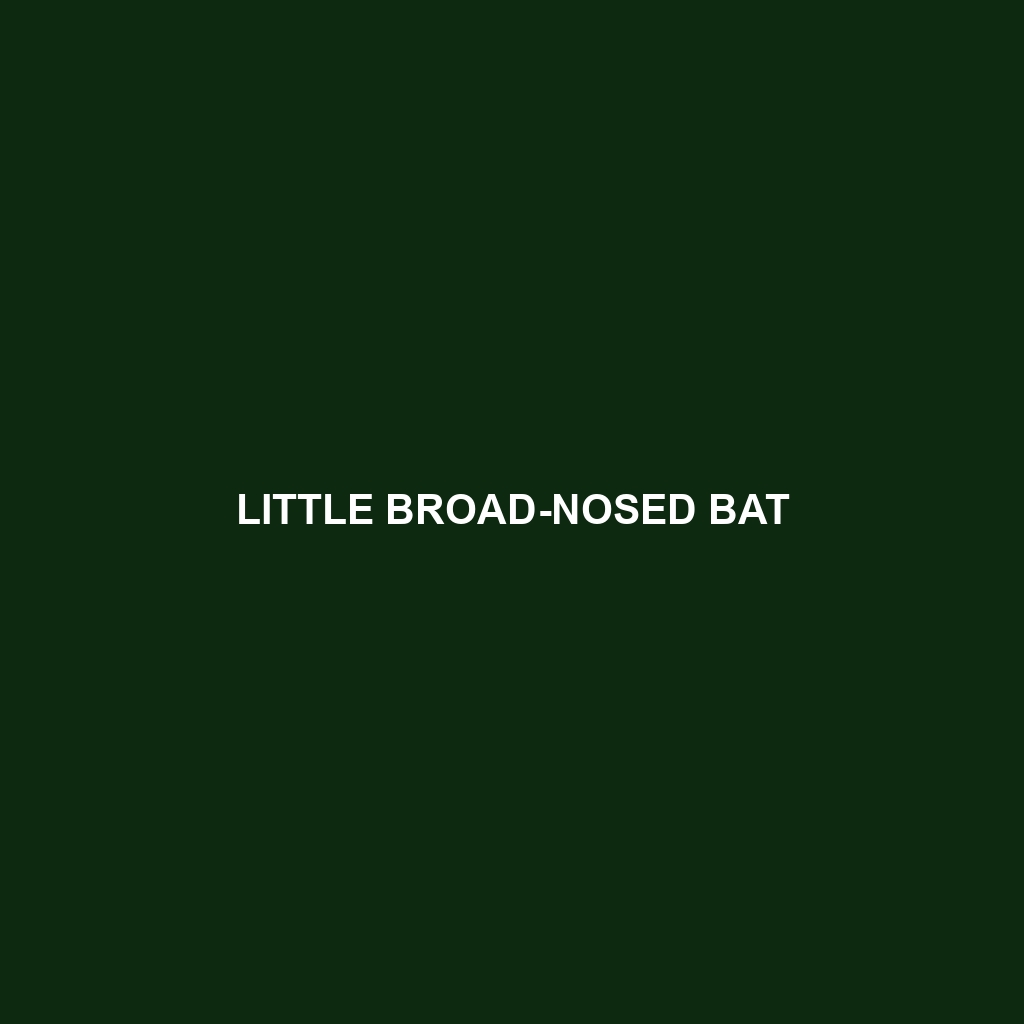Little Broad-nosed Bat
Common Name: Little Broad-nosed Bat
Scientific Name:
Habitat
The Little Broad-nosed Bat is primarily found in various regions across southeastern Australia. This bat thrives in diverse environments, including temperate forests, wetlands, and urban areas. While it prefers the shelter provided by dense vegetation, it is also commonly seen in areas near water sources where insect prey is abundant.
Physical Characteristics
Measuring approximately 8 to 10 cm in body length, the Little Broad-nosed Bat features a robust build with broad, rounded ears and a distinctively broad nose. Its fur is typically a mix of dark brown and gray, providing excellent camouflage in its natural habitat. The species is known for its relatively short wings, which enables agile maneuverability while hunting.
Behavior
This bat is predominantly nocturnal, taking to the skies at dusk to forage for food. The Little Broad-nosed Bat is known for its echolocation skills, allowing it to navigate and hunt effectively in the dark. Socially, these bats often roost in small groups, which provides added protection against predators while also facilitating social behaviors.
Diet
The Little Broad-nosed Bat primarily feeds on a diet of insects, including moths, beetles, and flies. This species demonstrates a preference for foraging near water bodies, where insect populations are denser. Its feeding habits contribute to the regulation of insect populations, making it an important species in maintaining ecological balance.
Reproduction
Breeding season for the Little Broad-nosed Bat typically occurs in late spring to early summer. Females usually give birth to one pup per season after a gestation period of about 6 to 7 weeks. Upon birth, pups are dependent on their mothers for milk and protection, gradually learning to fly and hunt on their own as they mature.
Conservation Status
Currently, the Little Broad-nosed Bat is classified as vulnerable due to habitat loss and environmental changes. Conservation efforts are essential to protect this species, as they face threats from urban development, climate change, and pesticide use affecting their insect prey.
Interesting Facts
Did you know that the Little Broad-nosed Bat can consume over 1,000 insects in a single night? This remarkable feeding capacity makes it a key player in controlling local insect populations. Moreover, the species is often studied for its unique adaptation to urban environments, showcasing its resilience.
Role in Ecosystem
The Little Broad-nosed Bat plays a crucial role in its ecosystem as a natural pest controller. By feeding on insects, this bat helps maintain the health of plant communities and agricultural systems. Furthermore, its guano enriches soil, promoting plant growth and supporting a diverse array of wildlife.
This HTML formatted description is designed to be SEO-optimized while providing detailed information about the Little Broad-nosed Bat.
